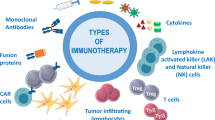Abstract
The immunologically mediated disease is a big family which affects many people in the world, since the cures are not yet available for most immune diseases, the patients face a lifetime of illness and treatment. Chinese medicine inspires us to develop new methods for the treatment of immune diseases. Previous researches of immune system have revealed that an immune network exists. The immune system is like a complex highway; if we travel on these highways, we must have a map to avoid travelling in the wrong direction. Drawing the map of immune network will provide new tools for us to look directly at the basis of the immune system.
Similar content being viewed by others
References
Hicklin T, Sandersl S, eds. Progress in immunoloogy. The American Association for the Advancement of Science. Newyork: MidAtlantic Publishing Services; 2012:26.
An YQ, ed. Brief history of immunology development. Beijing: People’s Medical Publishing House; 2012:33.
Renz H. Animal models for atopic dermatitis. Immunol Allergy Clinics North Am 2001;22:91–105.
Gorska MM, Stafford SJ, Cen O, Sur S, Alam R. Unc119, a novel activator of lck/fyn, is essential for T cell activation. J Exp Med 2004;199:369–379.
Hultmark D. Drosophia immunity: paths and patterns. Curr Opinion Immunol 2003;15:12–19.
Diebold SS, Tsuneyasu K, Hiroaki H, Shizuo A, Caetano RS. Innate antiviral responses by means of TLR7-mediated recognition of single-stranded RNA. Science 2004;303:1529–1531.
Vepachedu R, Gorska MM, Singhania N, Cosgrove GP, Brown KK, Alam R. Unc119 regulates myofibroblast differenation through the activation of fyn and p38 MAPK pathway. J Immunol 2007;179:682–690.
Richards S, Gibbs RA, Weinstock GM, Brown SJ, Denell R, Beeman RW, et al. The genome of the model beetle and pest Tribolium castaneum. Nature 2008;452:949–955.
Provenge Official FDA Information for Drugs. 2010: Provenge dosage and administration. Baltimore, Maryland: US FDA Office; 2010.
Murphy JF. Trends in cancer immunotherapy. Clin Med Insights Oncol 2010;4:67–80.
Zi T. Huangdi’s internal classic. Xi’an: Shaanxi Normal University Publishing House; 2012.
Liu L, Ji LY. The commentary of Zuo. Beijing: Zhonghua Book Company; 2007.
Goverman JM. Immune tolerance in multiple sclerosis. Imm Rev 2011;241:228–240.
Guntermann S, Foley E. The protein dredd is an essential component of the C-jun N-terminal kinase pathway in the Drossphila immune response. J Biol Chem 2011;286:30284–30294.
Horng T, Medzhitov R. Drossphia MyD88 is an adapter in the toll signaling pathway. Proc Natl Acad Sci USA 2011;98:12654–12658.
Tang X, Li N. Using a map of the immune network as a novel tool in immunological studies. J Immunol Analys 2013;28:276–277.
Goverman J. Autoimmune T cell responses in the central nervous system. Nature Rev Immunol 2009;9:393–407.
Yokoi K, Koyama H, Minakuchi C, Tanaka T, Miura K. Antimicronial peptide gene induction, involvement of toll and IMD pathways and defense against bacteria in the red flour beetle, Tribolium castaneum. Results Immunol 2012;2:72–82.
Tang XS, ed. Traditional medicines and international market. 3rd ed. Beijing: People’s Medical Publishing House; 2003:73.
Zhang XQ, Tang XS, Chen HS. 848 immunological regulation. Beijing Med (Chin) 1990;10:196–199.
Author information
Authors and Affiliations
Corresponding author
Additional information
Both authors contributed equally to this paper
Rights and permissions
About this article
Cite this article
Tang, Xs., Li, Nh. Future view and development of immunology: Exploring the immunology based on Chinese medicine and culture. Chin. J. Integr. Med. 20, 563–569 (2014). https://doi.org/10.1007/s11655-014-1757-y
Received:
Published:
Issue Date:
DOI: https://doi.org/10.1007/s11655-014-1757-y




